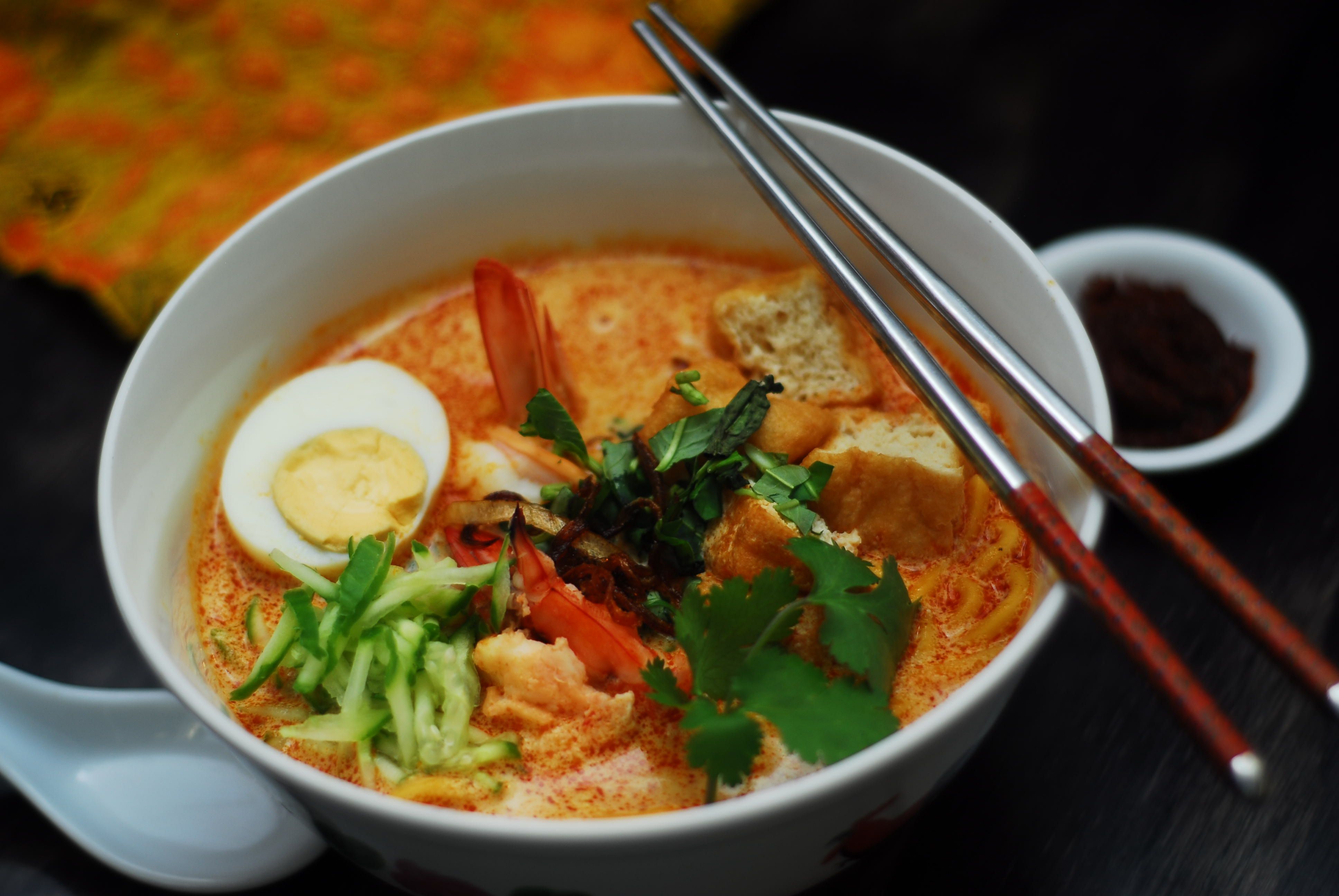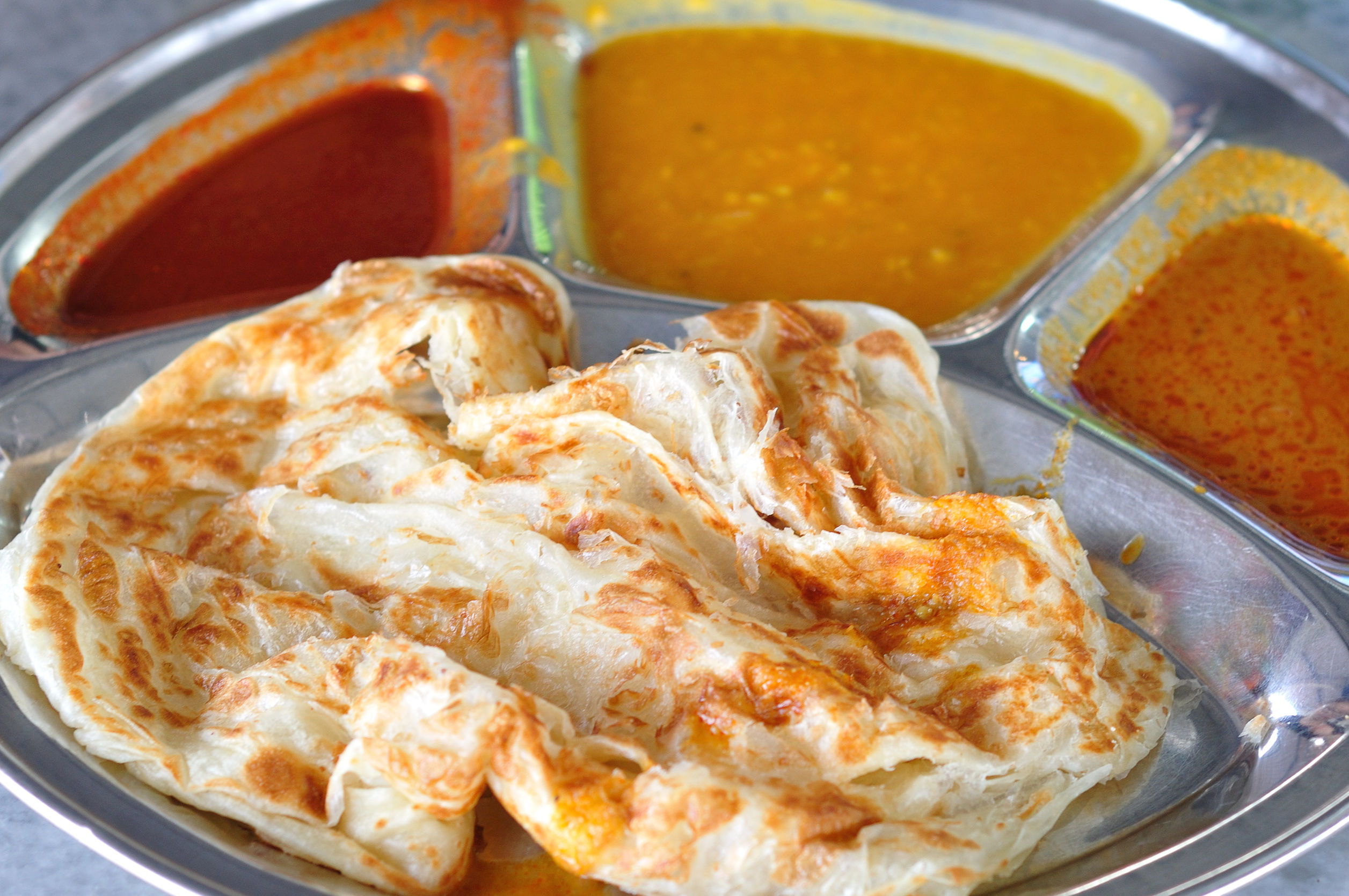Recipe Description
Most people have heard of Laksa and some fans may even know there are two distinct versions of this dish – Laksa Lemak with a coconut milk base, and Assam or Penang Laksa which is sour and has no coconut milk.
Many do not realise almost every State in Malaysia has its own signature version of Laksa Lemak, which means I’ve sometimes gotten into trouble with Malaysians abroad who find my laksa not matching the version they grew up eating in Malaysia.
This recipe is inspired by the laksa in Malacca but uses dried rice sticks instead of fresh rice “spaghetti” as the latter isn’t always readily available in some parts of the world.
Recipe and photo courtesy of Jackie M.
Recipe Ingredient
- For the paste
- 1cup onion, pureed
- 1tbsp galangal, minced or grated
- 3tsp belacan (shrimp paste)
- 2tsp turmeric, minced or grated
- 4tbsp dried shrimp, minced
- 150ml chilli paste
- 25g lemongrass, minced
- 3tbsp sugar
- 4 1/2tbsp chicken stock granules or 4 stock cubes
- 4tbsp garlic, minced
- 200ml vegetable oil
- For the soup
- 600ml coconut cream
- 1.4litre water
- 500g dried rice sticks, soaked in warm water until soft, then strained
- 250g fresh Hokkien noodles
- 2 Lebanese cucumbers ,cut into thin strips
- 200g beansprouts
- 1/2cup laksa leaves, aka Vietnamese mint, optional
- 10 tofu puffs, halved
- 300g seafood (prawns, calamari, sliced fishcake etc. – poached)
- 4 eggs, boiled, peeled and halved
Instructions
- Paste: Combine all paste ingredients except oil and mix well. Fry paste in the oil until browned and aromatic. Cool and store in refrigerator until needed.
- Soup: Combine 1 cup fried paste with water and coconut cream and bring to a boil. Throw in all the halved tofu puffs and allow it to simmer for 3 minutes.
- Bring a saucepan of water to a boil and blanch ingredients separately. Noodles and beansprouts – 10 seconds each; seafood and chicken about 20 seconds, until heated through.
- Divide noodles, beansprouts, seafood and chicken into bowls. Pour over soup and tofu puffs, top with eggs.











Hi Kuali Admin,
I think you need to distinguish between belacan from shrimp paste. The latter is also known as petis udang (in Malay) or hae-ko (in Chinese Hokkien) which has the consistency of black treacle and is usually found in fruit rojak and assam laksa.
So, if the recipe calls for belacan then please use belacan and not shrimp paste.